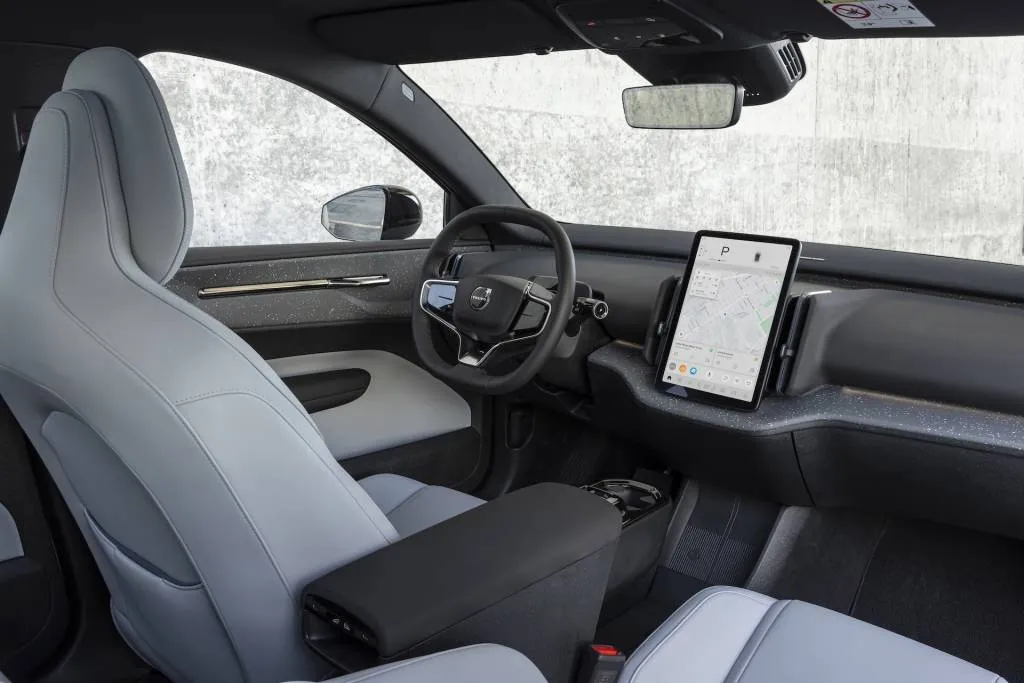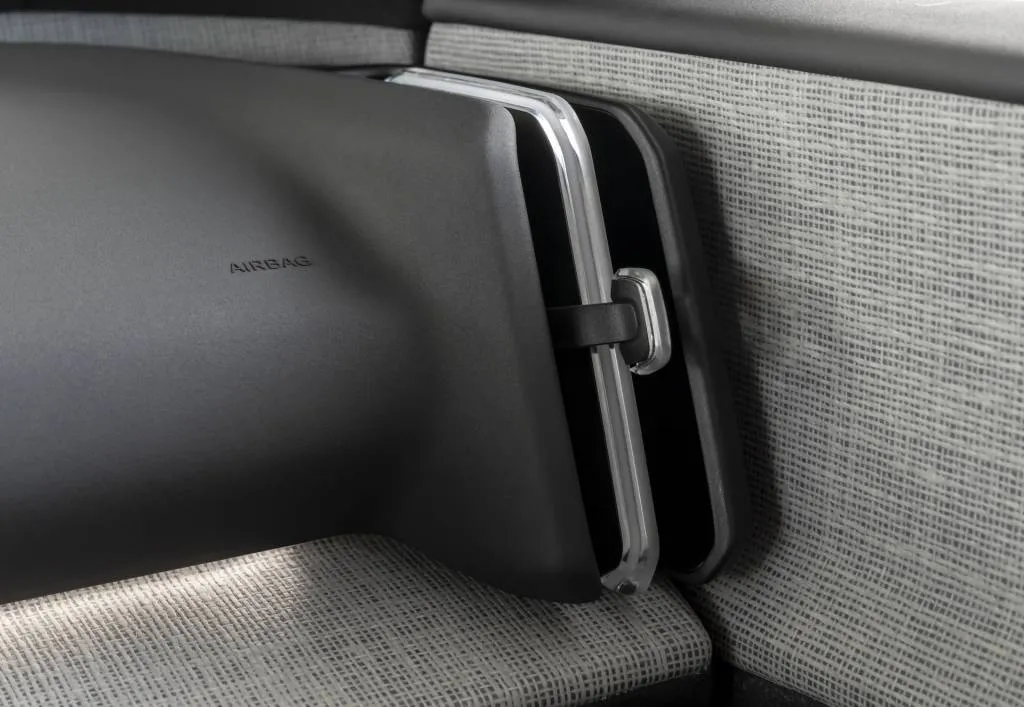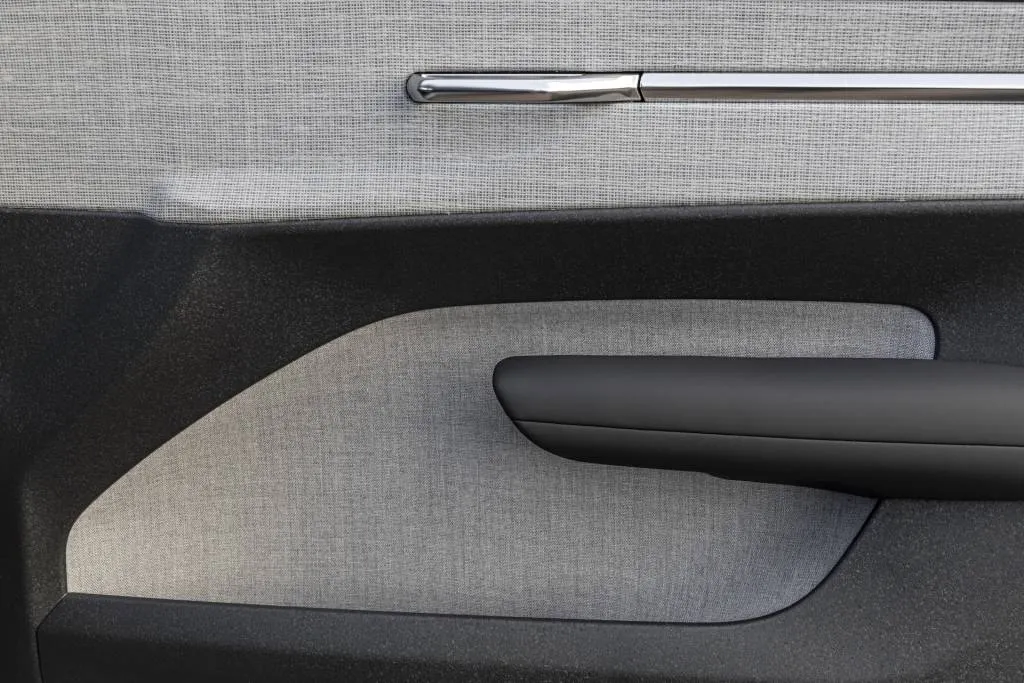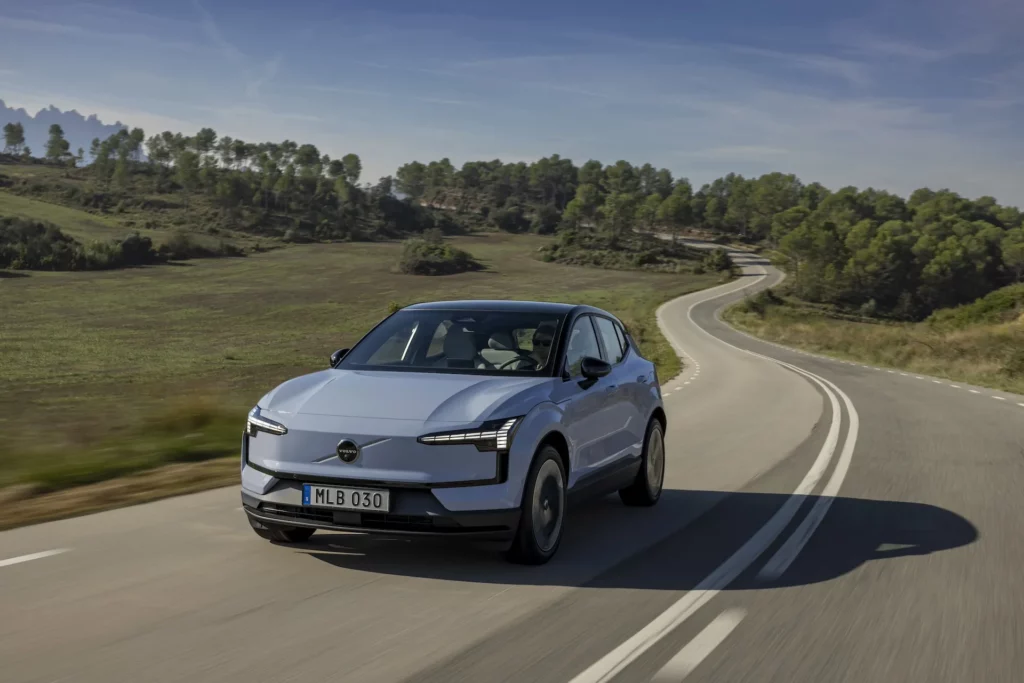Volvo has a question for the ranks of the EV-curious: Is the 2025 Volvo EX30’s small carbon footprint a fair trade for its small physical footprint?
The Chinese-owned Swedish car company has its most tidy SUV to date with the 2025 Volvo EX30, a crossover that’s not much larger than a Mini Cooper. With its battery-electric drivetrain rated with as much as 275 miles of range, it joins the XC40 Recharge in the Volvo lineup, with the arrival of the delayed EX90 electric flagship SUV rescheduled for early next year.
The EX30 nudges Volvo closer to becoming an all-electric brand by 2030. It’s a speedy, value-packed electric car with above-average range. Its SUV credentials are thin, however, and those used to Volvo’s recent luxury vibe won’t find that here. Instead, Volvo promises the EX30 will claim the lowest ever carbon footprint for the brand. In part that’s due to its size—it’s made of less material, it’s so tidy of proportion—but Volvo says much of the metal used in the EX30 will itself be recycled, as will the majority of the plastics and natural materials used inside its cockpit, and that its point of assembly uses 100% climate-neutral electricity.
Does that make it satisfying to drive, as well as reassuring to buy? I drove the EX30 in Barcelona traffic and around the Catalan countryside, and felt the ping of a Volvo vibe that echoed back at least a couple of generations, deep into its prosaic past.

2025 Volvo EX30 electric SUV (single-motor, Cloud Blue)

2025 Volvo EX30 electric SUV (single-motor, Cloud Blue)

2025 Volvo EX30 electric SUV (single-motor, Cloud Blue)

2025 Volvo EX30 electric SUV (single-motor, Cloud Blue)
Volvo EX30: Range, regen, and performance
At its core, the EX30 wraps a hatchback body around an EV drivetrain with a single rear-mounted 200-kw motor and rear-wheel drive. On the spec page, the aptly named Core model develops 268 hp and 253 lb-ft of torque, which Volvo claims can scoot it to 60 mph in 5.1 seconds. Whuffling from a stop, the single-motor car pauses for a split-second before it slices through morning traffic and curls up into the Barcelona hills near old Olympic venues, with all the urgency any driver needs in the circumstances. Top speed’s set at 112 mph.
Later, I’ll switch into a dual-motor car, which adds a front 115-kw motor but shares the same nickel-manganese-cobalt battery, estimated at about 69 kwh. So fitted, the all-wheel-drive EX30 (sold in either Plus or Ultra trim: more on that in a bit) can rocket to 60 mph in a claimed 3.4 seconds, toward the same 112-mph top speed. The twin-motor EX30’s net 422 hp and 400 lb-ft make it the fastest factory Volvo of all time, including Polestar Engineered vehicles. In this spec the EX30 posts slotcar-like responses to inputs on the thin accelerator pedal, surging ahead without a feint as it passes Seats rapid-fire, one by one.
I didn’t have the opportunity to fast-charge either car, but Volvo says the dual-motor EX30, good for an estimated 265 miles of range, can charge from 10-80% in less than a half-hour, at a peak charge rate of 153 kw. It hasn’t published a time for the single-motor car. That range is significantly better than the Hyundai Ioniq 5’s base range rating of 220 miles, and falls in line with the base Tesla Model Y and its 260 miles of range.
On the Tesla tip, Volvo says it will eventually switch to the Tesla-style NACS charging port. Early EX30s still will sport a CCS charger and owners will be offered a NACS adapter.
The EX30 can slingshot itself from a stoplight with verve, but Volvo has not saddled it with brittle suspension tuning. It’s compliant, and leans into corners gracefully even when the wheels contact the ground through 20-inch tires. A simple pair of MacPherson struts in front and a multilink rear suspension file off the worst of the road ahead, with light-touch steering picking its way through the countryside in concert with the hushed drivetrain and muted ride.
Understated but ultimately quick, the EX30 downplays its potential for regenerative braking and one-pedal driving. Volvo has tuned the SUV for very light regen, which isn’t even available in the Performance drive mode (which itself can’t be chosen if the battery’s charged to less than 80 percent). It’s a choice that could easily be moderated or altered with an over-the-air update or firmware intervention. Here’s hoping that happens as it shows up in U.S. showrooms.
As for its SUV bona fides, the EX30 weighs a lot, upwards of 3,858 pounds as a single-motor car and 4,140 pounds as a twin-motor machine. It does have 7.0 inches of ground clearance and a tow rating of up to 2,000 pounds, but it’s just not intended for any serious off-roading. It’s a crossover at heart. We’ll wait until the forthcoming Cross Country edition for better clearance before tackling tough terrain.

2025 Volvo EX30 electric SUV (single-motor, Cloud Blue)

2025 Volvo EX30 electric SUV (single-motor, Cloud Blue)

2025 Volvo EX30 electric SUV (single-motor, Cloud Blue)

2025 Volvo EX30 electric SUV (single-motor, Cloud Blue)
Volvo EX30: Google nests in a spartan cabin
Styling cues inside and out that identify the EX30 and as a Volvo. The hammer-style LED headlights that bowed on the brand’s recent decade’s worth of SUVs gets pinned here to the front end, while the side panels wear gentle scallops that emphasize the car’s shoulders. The rearmost roof pillars plant the car, and cap the squared-off, stubby body with LED taillights that trail up the pillars like illuminating vines.
The EX30 cockpit dips into another inkwell for inspo. The single, center-mounted touchscreen taps Tesla’s tech-ripe look—but the cabin’s trimmed in all kinds of recycled matter that comes off as the polar opposite to the dreamy birch-white woodgrains and pillowy nappa leathers of Volvo’s upscale SUVs. While it pours out top-shelf performance, Volvo trims the doors, dash, and seats in thrifty stuff that reminds me of the Ford Maverick. Between its vertical air vents it wears wide belts of plastic reinvented from old window frames or from pulped denim.
Some versions decoupage the dash with flax. The rugged spec looks right at home in the vast halls of a flat-pack furniture store, but contrasts starkly with the performance runs it rips. Think back to the 240 sedans and wagons and you’ll understand the prosaic take better. Endurance is the goal, not elegance.
The materials will be as controversial as the nylon lava-orange carpet from the XC40. Otherwise the EX30 interior’s more mundane. Volvo keeps its seat-comfort skills on high alert here, with softly bolstered chairs and a good range of manual adjustment; only the top version gets power front seats, and Volvo offers no leather to swap in for the natty recycled fabric the seats wear well. The bottom cushion needs to tilt down at its back for premium comfort, but otherwise the EX30 suits two big front passengers well.
With a 104.3-inch wheelbase and an overall length of just 166.7 inches, the EX30 can’t carve back-seat miracles out of the footprint. With just 32.3 inches of legroom, it’s more than cozy for two medium-sized passengers back there, and toeroom under the front seats is sorely lacking.
Where the EX30 excels is in storage. The cupholders pop out from under the front armrest, above a console with storage beneath a butterfly lid. A usefully shaped glovebox sits under the central screen, in reach of both driver and passenger. The EX30 offers up 14.1 cubic feet of space behind the rear seats, or31.9 cubic feet when the seatbacks drop. A shallow 0.2 cubic-foot bin sits under the hood, less a frunk than a frovebox.
As for infotainment, Volvo has fitted a Tesla-like single touchscreen interface for its EX30 EV. It delivers the usual mapping and vehicle-control functions—but also hosts the vehicle’s gauges and some of its finer user controls. To adjust the mirrors, the driver must tap the screen then swipe on steering-wheel controls to reposition them. It’s a bit too complicated in its quest for simplicity. Maybe one day it will all feel as familiar as ordering a McRib from a digital kiosk?
Until then, the EX30 will have Volvo’s safety reputation to lean on. The NHTSA and IIHS haven’t had a crack at it yet, but Volvo bundles every EX30 with automatic emergency braking, adaptive cruise control, blind-spot monitors, and rear parking sensors.

2025 Volvo EX30 electric SUV (dual-motor, Vapor Grey)

2025 Volvo EX30 electric SUV (dual-motor, Vapor Grey)

2025 Volvo EX30 electric SUV (dual-motor, Vapor Grey)

2025 Volvo EX30 electric SUV (dual-motor, Vapor Grey)
Volvo EX30: Prices, standard features, and trim levels
On sale now, with deliveries due early next year, the 2025 Volvo EX30 starts from $36,245 for the single-motor Core model. That includes the Google infotainment system as well as the handy wireless Apple CarPlay override and 18-inch wheels. Heated seats and a heated steering wheel cost an additional $500.
For $40,195 Volvo outfits the single-motor EX30 Plus with 19-inch wheels, Harman Kardon sound, a wireless smartphone charger, and a panoramic roof.
Volvo asks $46,195 for the dual-motor Plus, and another $800 for 20-inch wheels on it, or on the Ultra EX30, which adds on front power seats with lumbar adjustment as well as a surround-view camera system, automatic park assist, and hands-free driver assistance, dubbed Pilot Assist by Volvo. A single-motor Ultra goes for $41,895; the dual-motor Performance Ultra, $47,895.
All versions sport a 4-year/50,000-mile warranty that includes the first three scheduled service visits. But none qualifies for the IRA tax credit of up to $7,500, since neither the car nor its battery are sourced from North American or otherwise privileged places.
The 2025 EX30 still poses a strong value proposition—and a question for those who see sustainability as the future of the privately owned car. Does the EX30 still ring the same chimes that Volvos past have, for the green buyers it has in mind? If they top their must-have lists with sustainability and efficiency, it does.
—
Volvo paid for travel expenses so that we could bring you this first drive of the 2025 EX30.

